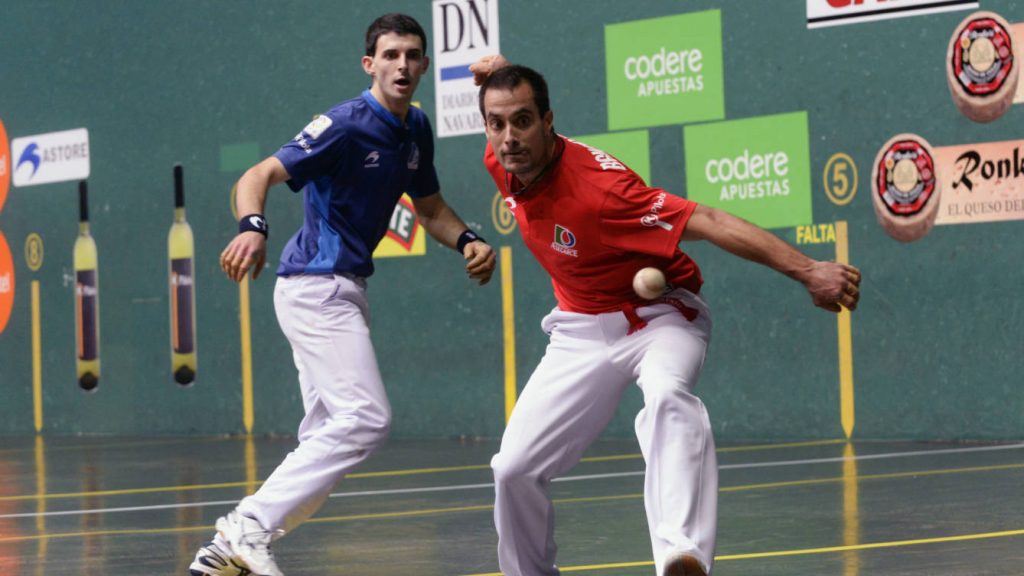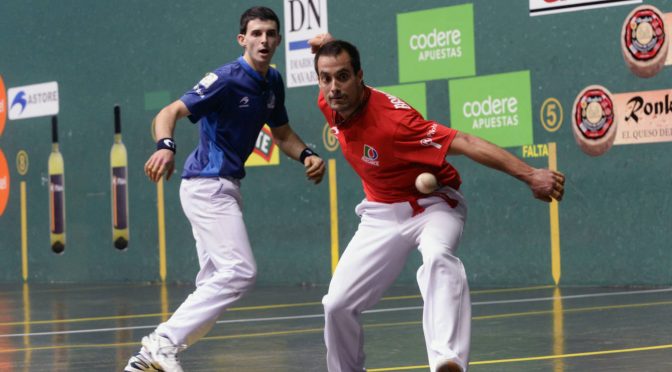If you go to any town in the Basque Country, you will find a plaza surrounded by a church, a bar, and a fronton. The fronton, and pelota, are a cornerstone of Basque society. Perhaps one of the most famous exports of the Basque Country is jai alai, the fastest ball game played in the world, which has been played along the eastern seaboard of the United States, Mexico, and The Philippines. But, if you go to the Basque Country, you’ll be hard pressed to find a jai alai match. Rather, pelota mano, or handball, is much more popular right now, and has a much longer history.

- Ball games such as pelota are common all around the world, and it is hard to distinguish the independent origins of Basque variants. As Resurrección Mª de Azcue wrote: “It is true that, just as there is no sea, not even the Caspian, whose waters do not mix with those of another sea, there is also no vernacular language, custom or autochthonous tradition that can boast of not having been influenced by others.” However, whatever the origin, pelota has become integral to the Basque identity.
- One of the first mentions of pelota comes from Pelote Basque, published in 1944 by A. Jáuregui, who quotes from the 16th century work of Vainsot: “For many years the ball game has been practiced only with the palm of the hands; as this exercise injures the hands when practiced continuously and brutally, the handball players of today increasingly protect themselves with gloves and double gloves.” Indeed, Manuel Larramendi, writing in the early 1700s, remarked on the hardness of the ball, saying “They break nails and fingers, open their hands, stain their arms and still dislocate them, and with these misfortunes and dripping blood … the game is over.”
- A number of remedies were proposed for healing the hands of these players. These included good nutrition and rest, but also more extreme measures like smashing the hand with a hammer, leeches and snails, and cutting the hand to bleed it. Injuries to handball players led to “hand or nail disease,” considered a mysterious disease of the Basques which only recently was connected to hematoma resulting from venous ruptures in the fingers and hand.
- Pre-Columbian Aztecs and Mayans used latex, derived from rubber trees, to make balls. It wasn’t until the end of the 18th century, after the French brought latex from the Americas to Europe, that Basques replaced the cores of the ball with latex. Before that, they used the intestines of cats.
- This change in the composition of the ball also forced a change in the game itself. Before, players would stand facing each other, separated by a net, but the new balls had a much greater bounce. Players soon adapted and began hitting the ball against a wall, and the modern form of pelota mano was born.
- Today, handball is watched across the Basque Country on television sets in bars and homes. One reason that handball is so ubiquitous is that it isn’t quite as fast paced as jai alai or pala, which are harder to capture on TV (those variants also require longer courts, which are also harder to show on TV). While tending the Herriko Taberna in Munitibar, my uncle always had handball on the TV.
Primary source: Letamendia Loinaz, Ander. Pelota vasca. Enciclopedia Auñamendi, 2020. Available at: http://aunamendi.eusko-ikaskuntza.eus/es/pelota-vasca/ar-102458/



NOT “handball” which is a 7-a-side throwing ball game with goals.
In English you need to say “pelota”.
In Basque it is “esku huska” or “esku huskako pilota” (but people just say “pilota” ). In Spanish it is “pelota a mano”
Thanks Drew, I appreciate the clarification. I don’t think many people in English know what pelota would be. At least in the United States, the term handball can also refer to a game much like pelota — https://en.wikipedia.org/wiki/American_handball — but is certainly very different from team handball.